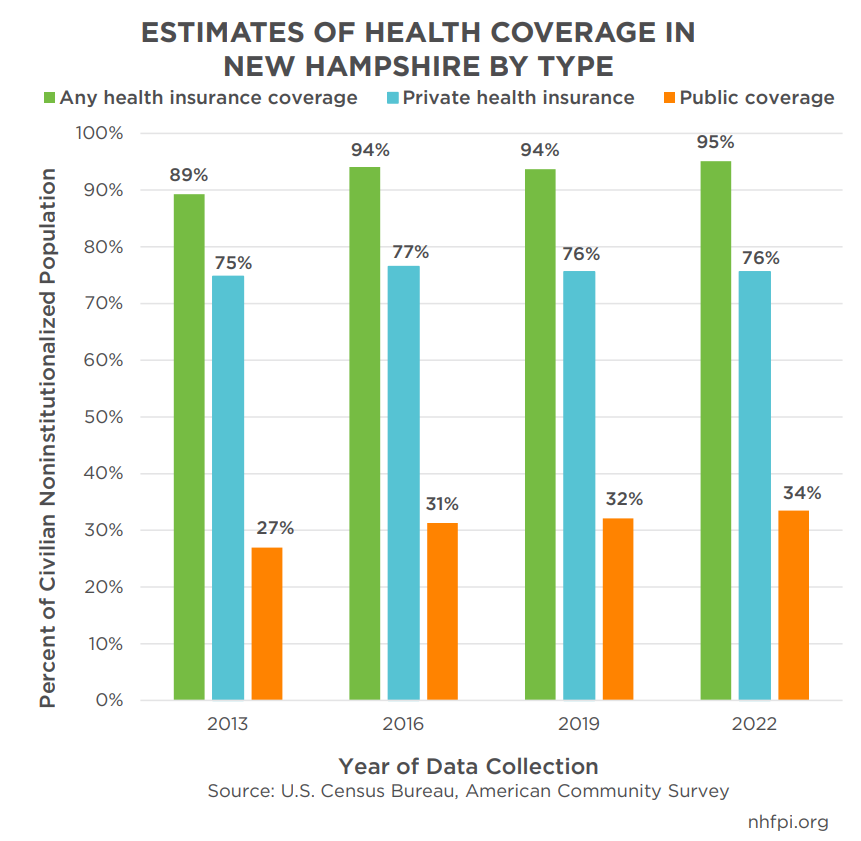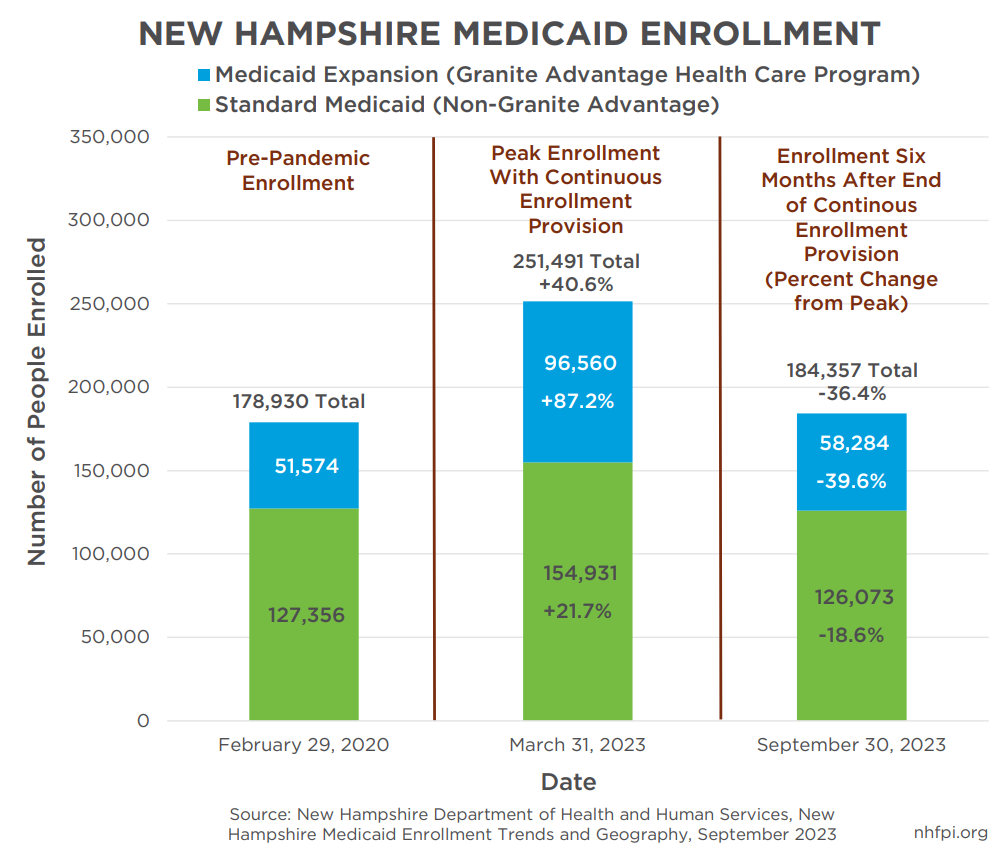Download a PDF version of this Fact Sheet here.
Health Care Costs Remain Significant for Granite State Families
- The Massachusetts Institute of Technology estimated a family of two adults and one child in New Hampshire would pay about $9,022 annually for medical costs, or about 7.2 percent of median household income for three-person families in 2022. The Commonwealth Fund estimated average employee premiums and deductibles combined in New Hampshire were $8,579 in 2020.
- Medical care spending per person on personal health care, including public and private insurance expenditures, totaled $11,793 during 2020 in New Hampshire. That amount was the 11th highest expenditure amount among the 50 states, but was the second-lowest among New England states. Annual per capita personal health care expenditures grew faster in New Hampshire than in New England overall, and nationally, from 1991 to 2020; growth was behind only Vermont in the region.
Health Coverage During 2022: Medicaid Boosted Public Coverage
- The uninsured rate in New Hampshire declined by about half between 2013 and 2022, reflecting the Patient Protection and Affordable Care Act, the State’s 2014 Medicaid Expansion, Medicaid coverage expansions during the COVID-19 pandemic, and more state residents aging into Medicare eligibility. Private insurance has covered a relatively consistent percentage of the population.
- Medicare eligibility typically begins at age 65 years. Medicare coverage will likely continue to increase in importance during the next decade, as an estimated 216,000 Granite Staters, 15.5 percent of the population, were between the ages of 55 and 64 in July 2022.
Medicaid Disenrollment Began Following Pandemic Expansion
- In response to the COVID-19 pandemic, the federal government provided additional resources to states that kept individuals insured by Medicaid enrolled in the program, even if their situation, such as income, changed in a manner that would have led to disenrollment previously.
- The policy expired, and disenrollments in New Hampshire began April 2023.
- Between March and September 2023, Medicaid enrollment dropped by 67,134 people (36.4 percent).
Health Care Workforce Remains Constrained
- Employment in health care and social assistance, which is the state’s largest employment sector, remained about 325 positions (0.3 percent) lower on average during the first eight months of 2023 than it was in 2019.
- However, between April 2020 and July 2022, New Hampshire’s population grew by approximately 17,700 people (1.3 percent), suggesting growth in the population needing care outpaced the number of filled health care positions.
- Overall and across all industries, New Hampshire’s resident average monthly labor force size remains 15,600 workers (2.0 percent) lower thus far in 2023 than it was in pre-pandemic 2019.
State Budget Investments in Both Health Care Services and Workforce
The State Fiscal Years 2024-2025 State Budget makes several key health and workforce investments:
- Medicaid Expansion reauthorized through 2030
- Medicaid coverage extended to a full year postpartum and to certain immigrant women and children, expanded birth and infant services
- Targeted Medicaid reimbursement rate increases with $134.2 million in State funds
- Increased developmental services funding
- Investments in system of care for children’s behavioral health, and a new system of care for healthy aging and long-term care investments
- Added funding for 10-Year Mental Health Plan, Family Resource Centers, maternal home visiting programs, and food assistance for women and children
Download a PDF of the Fact Sheet Health in New Hampshire: Data and Policies in 2023 with citations, published at the New Hampshire Fiscal Policy Institute’s 8th Annual Conference, by clicking here.


